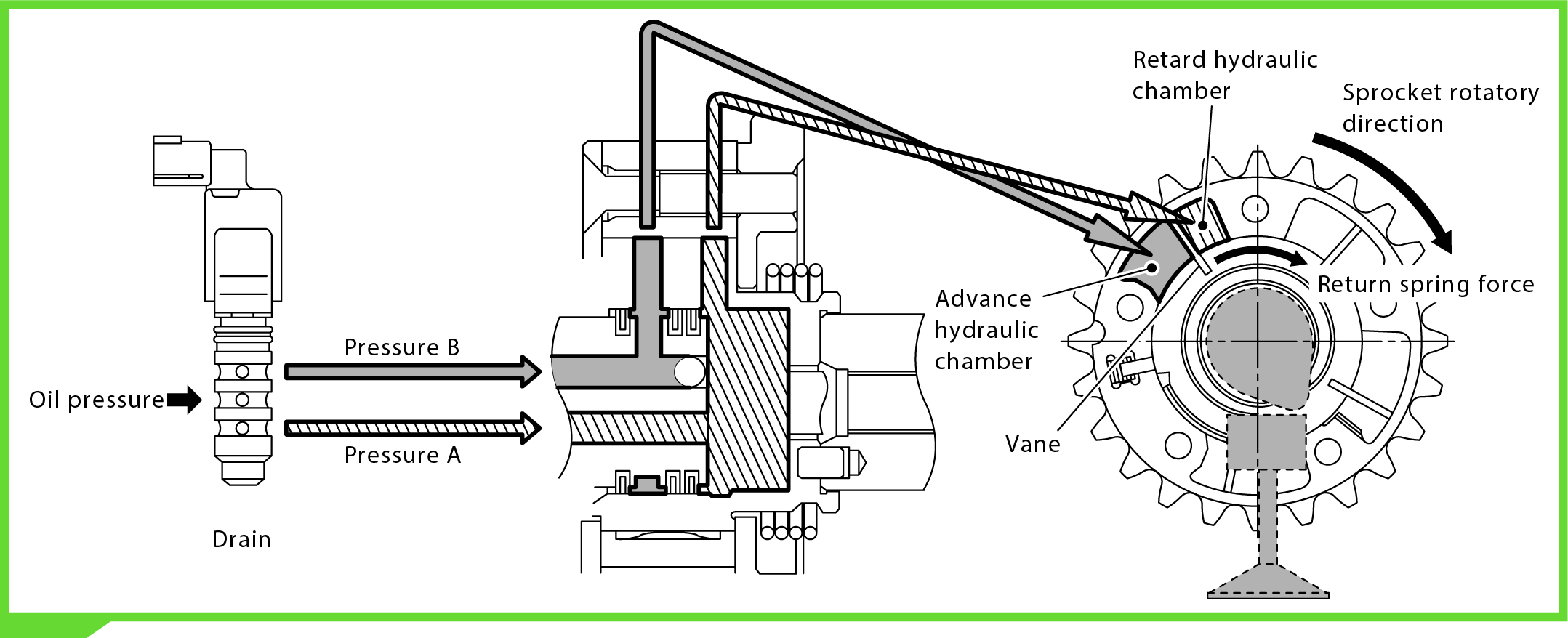2017 Pathfinder VQ35DD Engine
Introduction
The VQ35DD engine used in the 2017 Pathfinder has been significantly revised from the 2016 model year version. The new 3.5-liter DOHC V6 engine adds Direct Injection Gasoline™ (DIG), a revised air intake system, Electronic Variable Timing Control (e-VTC) and mirror bore coating. The new parts and technologies help increase the horsepower and torque by about 10% without sacrificing fuel economy.
- Horsepower now at 284 hp at 6,400 RPM (was 260 hp)
- Torque now at 259 lb-ft at 4,800 RPM (was 240 lb-ft)
- 2017 EPA Fuel Economy Estimates 20 city / 27 highway (front-wheel drive), 19 city / 26 highway (4-wheel drive). Actual mileage may vary with driving conditions.
- Compression ratio is 11.0:1 (was 10.3:1)

NOTE:
- 2017 Pathfinder vehicles sold in the USA use the VQ35DD. 2017 Pathfinder vehicles sold in Mexico use the VQ35DE engine.
- The 2017 Pathfinder ESM contains the procedures for both the VQ35DE and the VQ35DD.
- When service procedures are different between the engines, be sure to use the procedure labeled “For USA and Canada” because that is for the VQ35DD engine.
- The procedure labeled “For Mexico” is for the VQ35DE engine.

Piston and cylinder
The new engine is constructed with an aluminum block and heads (like the 2016 model), but it incorporates a new cylinder lining mirror bore coating to reduce weight and friction. The mirror bore coating helps increase horsepower and torque by reducing the friction between the piston ring and the cylinder wall. This cylinder coating process includes spraying molten iron onto the surface of the cylinder bore, which eliminates the need for the six traditional cast iron cylinder liners, making the engine lighter. This coating process also improves thermal conductivity.
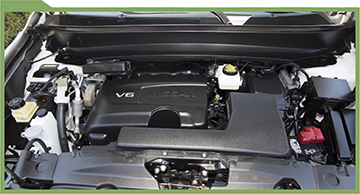
Mirror bore coating gives the cylinder surface a mirror-like finish. It has minute holes on the surface of the coating, which then keeps an oil film on the surface, reducing friction and eliminating the need for conventional cylinder cross-hatching. So, the mirror bore coating surface is smooth but porous. In addition, the reduced friction allows a reduction in the piston ring tension, which also helps improve fuel economy.
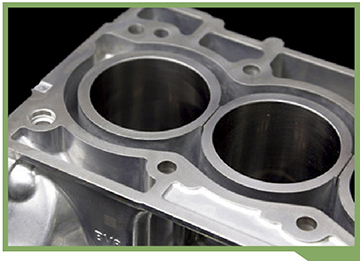
Direct Injection Gasoline™ (DIG) System
The Direct Injection Gasoline™ (DIG) system helps the engine achieve:
- Wide-Open-Throttle (WOT) performance
- Fuel economy
- Emissions performance
The DIG system injects fuel directly into the combustion chamber of each cylinder rather than into the intake port. The advantages are:
- Reduced time needed for the fuel to burn
- ffHelps eliminate residual fuel buildup
- Cleaner exhaust

The main parts of this system are the:
- High-pressure fuel pump,
- High-pressure fuel lines,
- Fuel injectors,
- Fuel rail,
- Pressure sensor
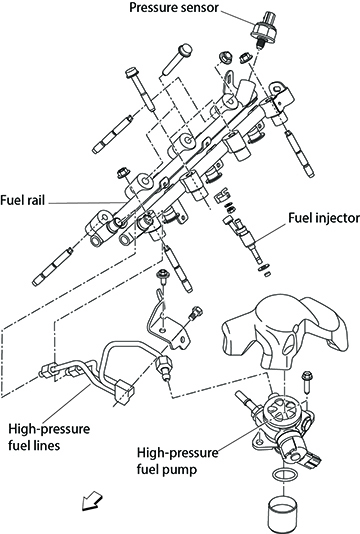
Intake and Exhaust Changes
The intake and exhaust systems were modified to help reduce intake pressure loss and reduce exhaust back pressure.
The intake revisions include:
- New intake manifold composition
- Intake duct changes
- Throttle body enlarged diameter
The exhaust system changes include:
- Muffler sized up
- Change in catalyst density
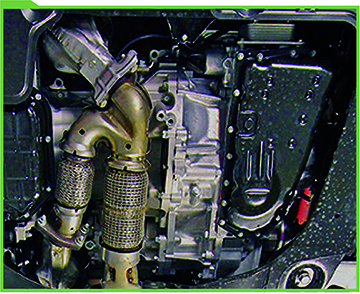
Front timing chain case
You’ll notice that the intake valve timing cover is different, but we’ll discuss that in the e-VTC section of this article.
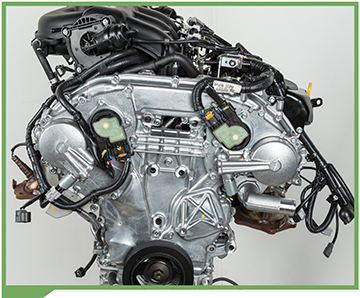
The front chain case was reinforced to reduce Noise, Vibration and Harshness (NVH). Part of that reinforcement meant removing the water pump access cover.
When removing the water pump for any reason, the complete front timing chain case cover will need to be removed.
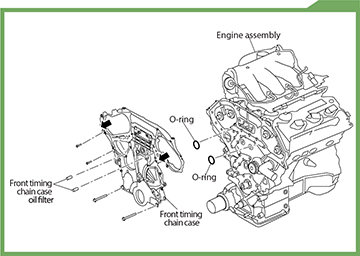
Lubrication System
The oil pan has been reinforced to help reduce NVH and the oil pump has been changed to a variable displacement oil pump.
The reason for the change is to help increase fuel economy. Generally, oil pumps consume more power and deliver significantly higher oil pressure than needed. Variable displacement pumps change the displacement volume so that a more appropriate amount of oil is pushed through the system, which reduces the power used by the oil pump. This new-style pump is chain driven and uses a two-stage oil pressure relief valve.

Another new item in the lubrication system is the Engine Oil Pressure Control Solenoid Valve, which controls the low and high oil pressure depending on the engine oil temperature and engine load.
The oil cooler installation and removal procedures remain the same as on the 2016 model. Internally, the oil cooler has less resistance, which helps to improve fuel economy.
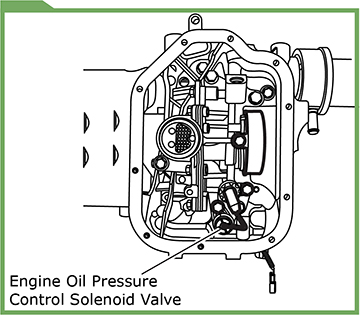
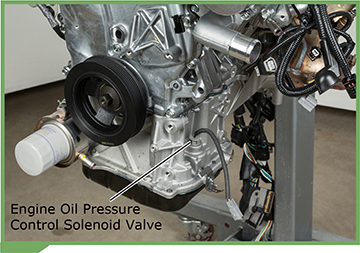
ECM and engine room harnesses
The ECM has been moved to a new location and a new module is now located where the ECM used to be. The new module is the electric Intake Valve Timing (IVT) control module, which controls the variable valve timing.
The engine room harness was also changed to accommodate the DIG, IVT, and other changes.
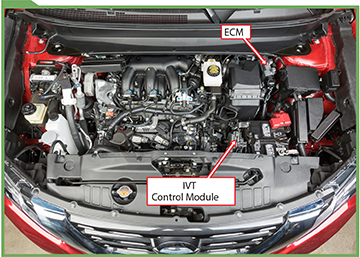
Electronic variable timing control (e-VTC)
This is the first Nissan application for the use of fully electric intake camshaft timing control. The electronic Variable Timing Control (e-VTC) operates the intake valves using electronic motors (IVT actuators) fitted to the valve timing system. The electronic VTC intake camshaft adjustment response time is faster than hydraulic VTC, especially at lower engine RPM.
The electric intake valve timing motors are controlled by a dedicated Intake Valve Timing (IVT) control module. The IVT control module controls the electric IVT control actuator status to change the opening and closing of intake valve. The target angle of valve timing is adjusted to advance or retard based on the engine communication signals transmitted from the ECM.
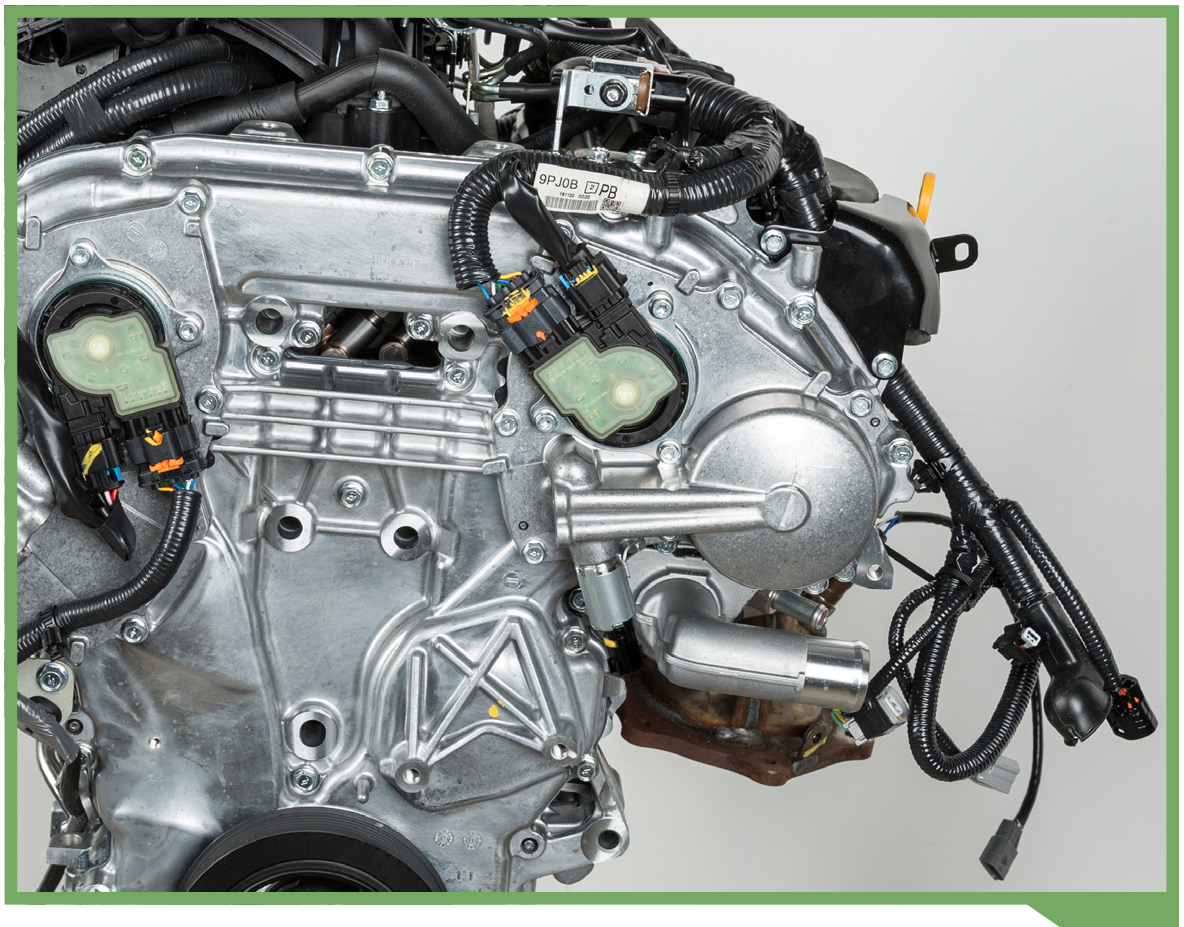
The ECM sends crankshaft position, exhaust valve position, and target IVT actuator position signals to the IVT control module via CAN communication. To control the injection pulse duration, the amount of fuel injected is preset by engine operating conditions. These conditions are determined by input signals for:
- Engine speed, intake air, fuel rail pressure and boost pressure
- The crankshaft position sensor
- The exhaust camshaft position sensor
- The mass air flow sensor
- The fuel rail pressure sensor
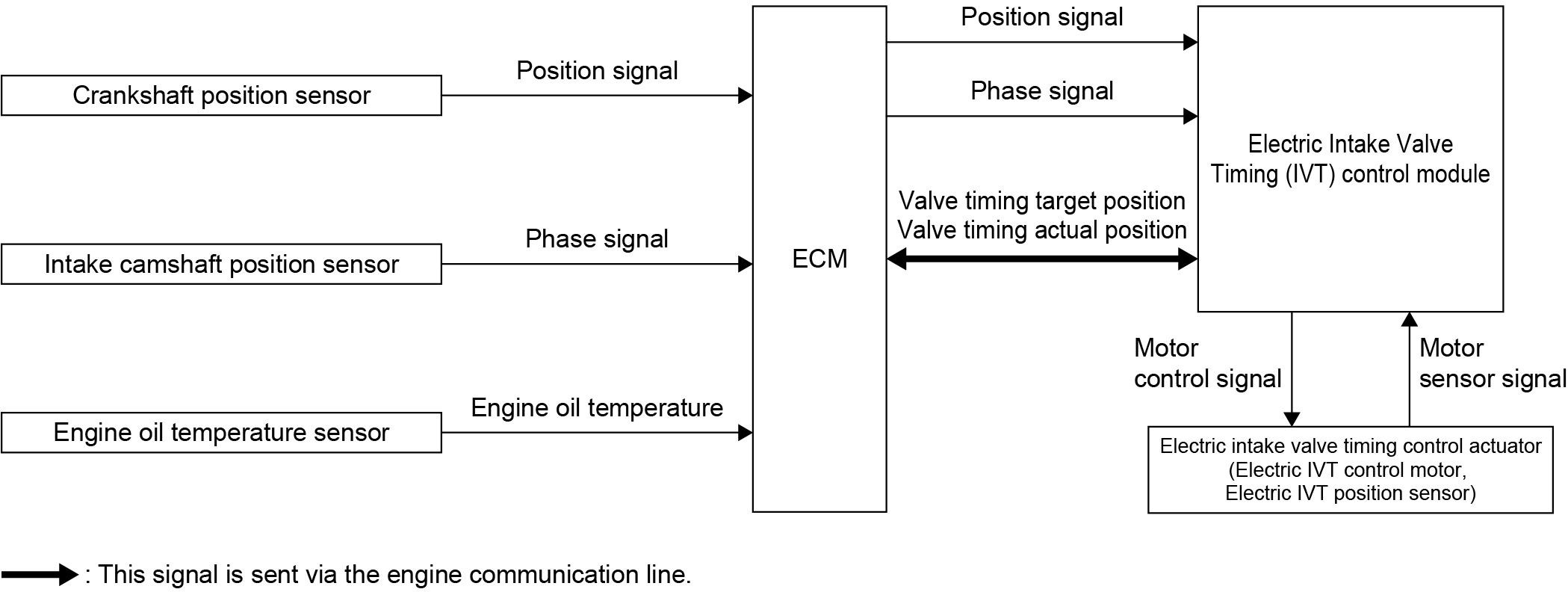
Exhaust Valve Timing Control
The exhaust valve timing controller controls the phase of the exhaust camshaft. Exhaust camshaft timing is accomplished hydraulically using engine oil pressure and the exhaust valve timing solenoid valve.
